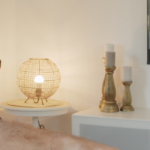MED-EL
Published May 25, 2022
Rehab at Home for Adults: Improving Awareness of Environmental Sounds

Welcome back to our Rehab at Home series. As always, this blog is designed to help you reach an everyday listening goal, so that you can get the most out of your cochlear implant. Today’s goal is all about improving awareness of environmental sounds for both safety and enjoyment.
Everyday Listening Goal 2: To Improve Awareness of Environmental Sounds for Safety and Enjoyment
Immediately after getting your cochlear implant, some sounds may sound different and unfamiliar. Sounds should become more recognizable, the more you hear them. This is especially important for certain sounds that are important for your safety, such as smoke detectors and car horns. These activities will help you become aware of the sounds you now hear with your cochlear implant(s).
In this video, you will meet Trudi along with her husband Reese and daughter Indi. Trudi was born deaf. She wore hearing aids from a young age and received speech therapy for 18 years. Eight years ago, Trudi decided to get a cochlear implant so she could hear her daughter better. Trudi shares her memories of hearing sounds for the first time and describes what she and her family did to improve her understanding of environmental sounds.
Tips for Developing Environmental Sound Awareness
Here are some additional tips to help you achieve the goal of improving your awareness of environmental sounds for safety and enjoyment.
To Get Started
- Walk around your house and listen to the sounds of familiar things (e.g., the kettle boiling, the microwave beeping, the dishwasher whirring, or a tap running).
- Ask someone to make sounds while you close your eyes and see if you can identify the sound.
- Press the test button on your smoke detector to make sure you can identify this sound.
As You Progress
- Wear your processor(s) whenever you’re awake.
- Walk outside and listen to see which sounds you can hear and which sounds you can recognise (e.g. birds, cars driving past).
Once You’re Almost There
- Wear your audio processor(s) outside in busy places (e.g. sit on a bench in a pedestrian mall, town square, or shopping centre, and listen for different sounds).
- Ask a friend or family member to make some sounds that you need to hear for safety (e.g. the doorbell, your telephone, or a car horn). Close your eyes and see if you can guess which sound they are making.
Download our Environmental Sounds Checklist here.
MED-EL
Was this article helpful?
Thanks for your feedback.
Sign up for newsletter below for more.
Thanks for your feedback.
Please leave your message below.
Thanks for your message. We will reply as soon as possible.
Send us a message
Field is required
John Doe
Field is required
name@mail.com
Field is required
What do you think?
The content on this website is for general informational purposes only and should not be taken as medical advice. Please contact your doctor or hearing specialist to learn what type of hearing solution is suitable for your specific needs. Not all products, features, or indications shown are approved in all countries.
MED-EL


